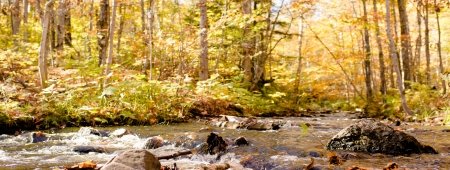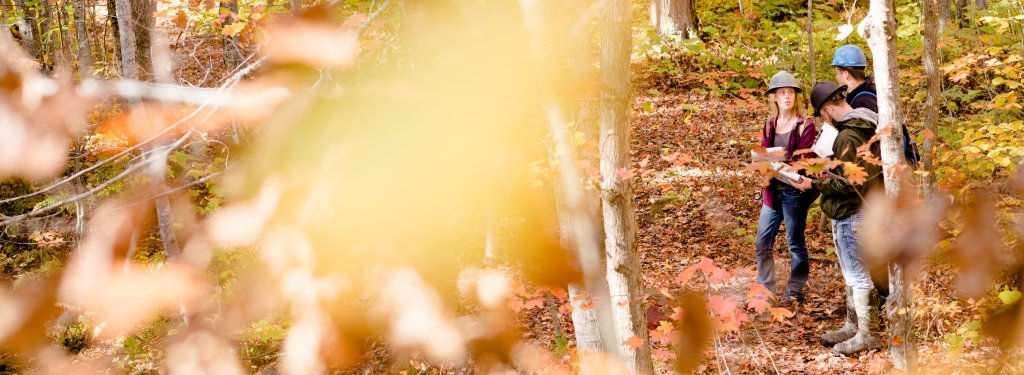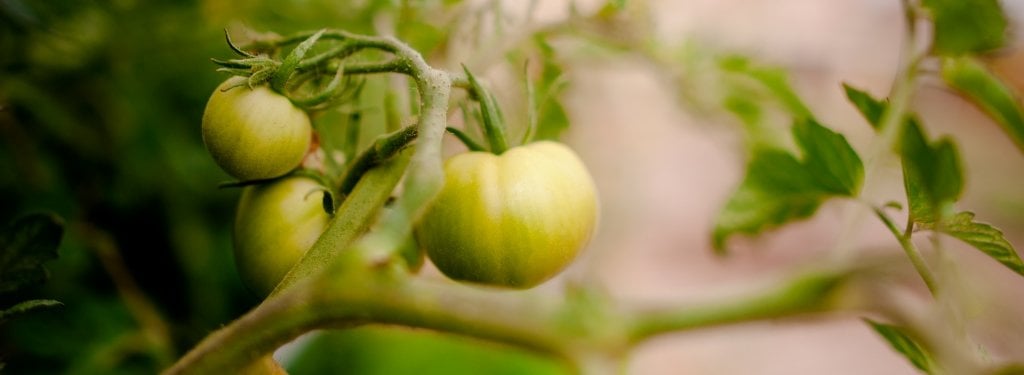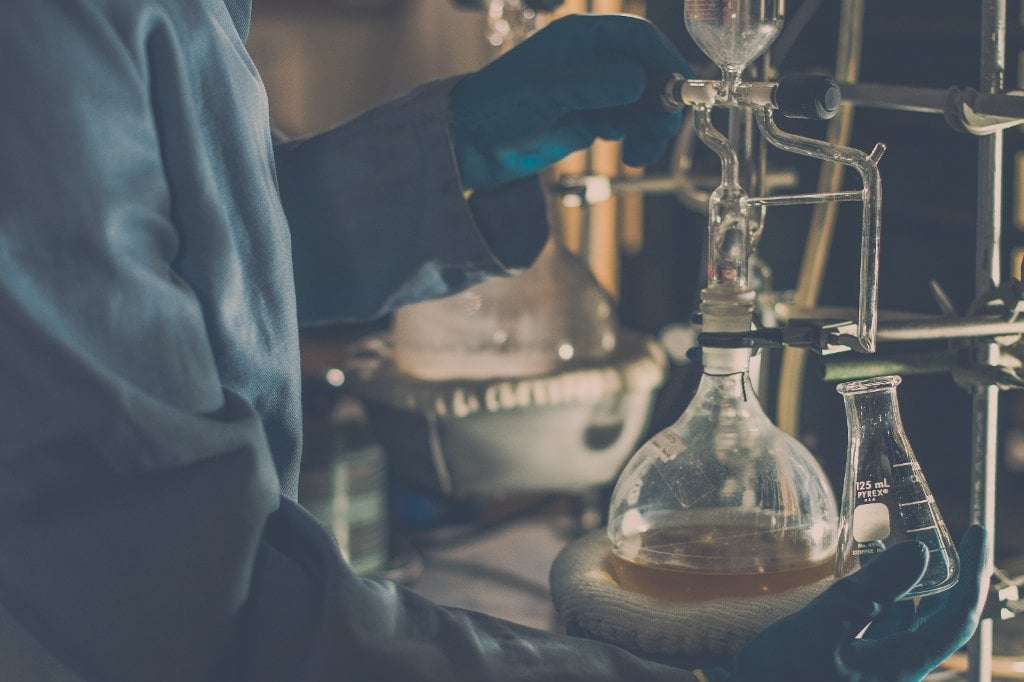Facing a crossroads of energy production and consumption, Kathleen Halvorsen is making woody biomass work for society and the environment.
 Kathleen Halvorsen weighs the woody biomass pros and cons, researching methods for reducing negative
social and natural effects of harvesting bioenergy crops.
Kathleen Halvorsen weighs the woody biomass pros and cons, researching methods for reducing negative
social and natural effects of harvesting bioenergy crops.
There's no denying we're at an energy crossroads. As the effects of present-day consumption mount, researchers continue to explore alternative energy sources. Thankfully, there are many promising options—but with each possibility comes a list of pros and cons.
Exploring how to weigh the positives and negatives of one promising option, woody bioenergy, is the work of Kathleen Halvorsen, a professor in both the Department of Social Sciences and the School of Forest Resources and Environmental Science. With the help of many interwoven grants (most recently a $4.8M National Science Foundation award), she and her team are researching bioenergy issues throughout the Americas. Her research spans six nations—Argentina, Brazil, Canada, Mexico, Uruguay, and the US—and investigates the socioeconomic impacts of woody bioenergy.
"It's important to ask how these new energy sources impact human and ecological communities. How can we develop ways to maximize the good and minimize the bad when we're harvesting woody biomass?"
"Woody bioenergy is used for a variety of things," Halvorsen says. "It provides heat, power, liquid transportation fuel. The team is looking at the use of soft and hardwood tree species and palm and jatropha oil."
All of these bioenergy crops present challenges, and Halvorsen's team aims to bridge the social, natural, and engineering science matters unique to each medium and region.
Halvorsen and her 95-person international team are exploring different issues in each of the project's six nations. In Argentina, for example, eucalyptus farms need to find an optimized way to grow their crops without disrupting bird populations or pollinators, like bees and other insects. The farmers, whose livelihoods depend on a good harvest, are equally important in the project's scope.

"Are there ways to help human communities get great benefits from the production of different bioenergy crops while minimizing negative social and natural impacts?," she asks.
Her project's success balances on international, interdisciplinary collaboration. With researchers' varied backgrounds (including forestry; social science; civil and environmental, geological, and chemical engineering experts at Michigan Tech alone), Halvorsen says the diverse expertise of her colleagues provides one of the most comprehensive analyses of bioenergy crops to date.
"At the end of the project," she says, "we will be able to advise communities about whether or not they want to attract bioenergy companies . . . about the environmental impacts of bioenergy production . . . about energy policy at state, national, and international levels."
Halvorsen also sees her work as a stepping-stone in a larger undertaking: the eventual de-carbonization of our global energy system.
"Ultimately, my research priorities are threefold," she explains. "We're studying ourselves—how to develop good teamwork skills and how scientists can be better interdisciplinary, international scholars. We're studying energy tradeoffs—how we can shift the energy balance in our favor. And we're studying biodiversity—how we can protect dimensions of the world that are threatened."
She says one of the most crucial components of her research will be her team's policy recommendations.
"Woody bioenergy is an important climate-change mitigation tool, and it is incredibly important that we increase our understanding of how to best use it on an international scale."
Learn more about Halvorsen's work.
Michigan Technological University is an R1 public research university founded in 1885 in Houghton, and is home to nearly 7,500 students from more than 60 countries around the world. Consistently ranked among the best universities in the country for return on investment, Michigan's flagship technological university offers more than 120 undergraduate and graduate degree programs in science and technology, engineering, computing, forestry, business, health professions, humanities, mathematics, social sciences, and the arts. The rural campus is situated just miles from Lake Superior in Michigan's Upper Peninsula, offering year-round opportunities for outdoor adventure.




